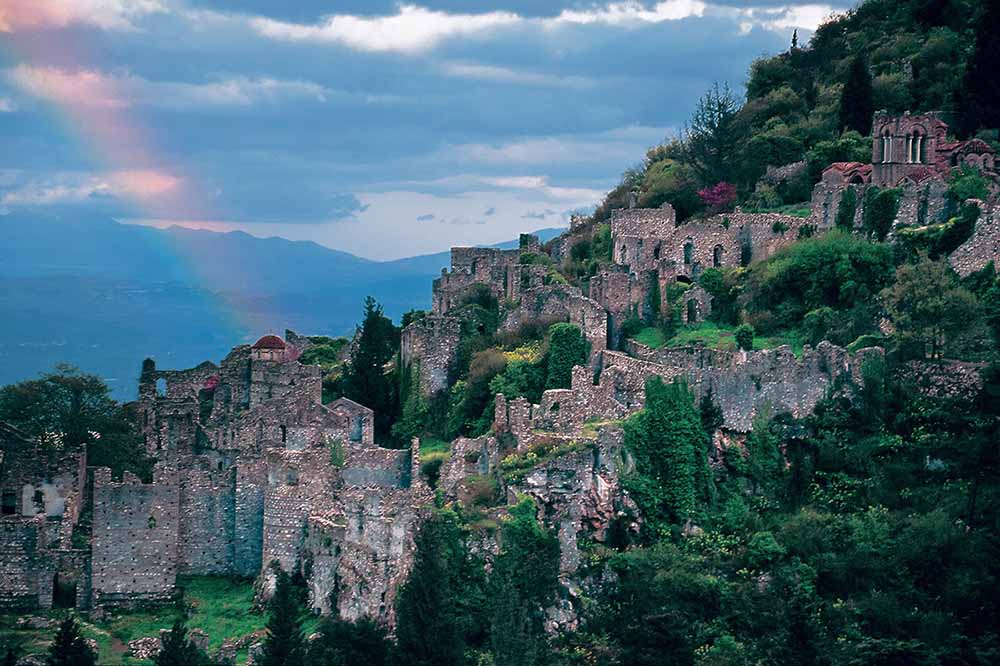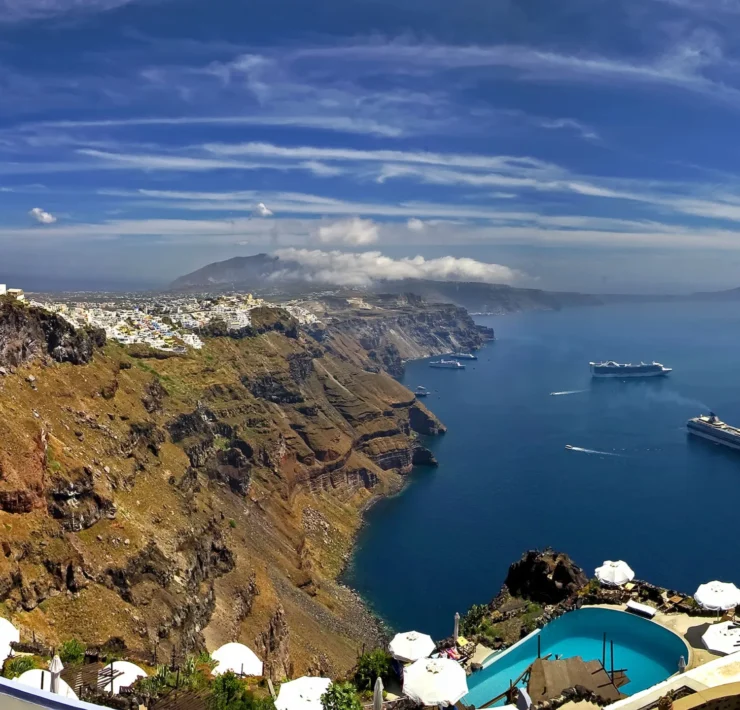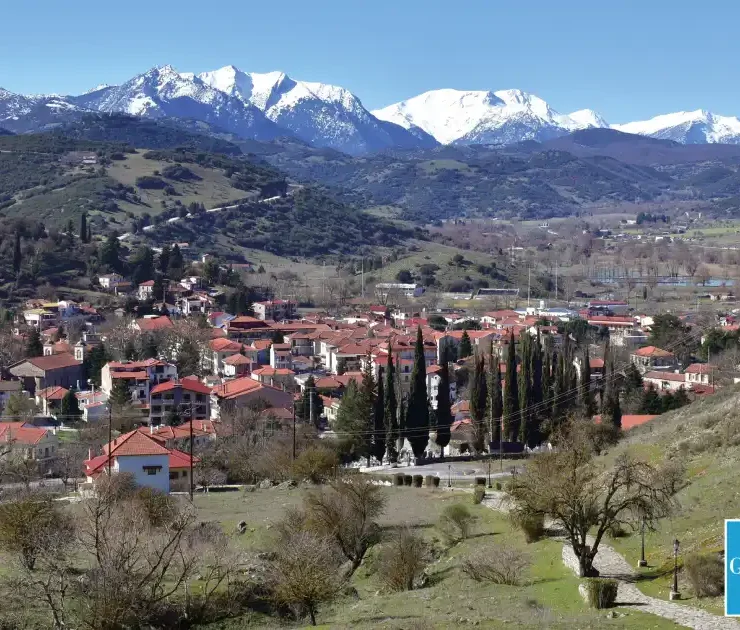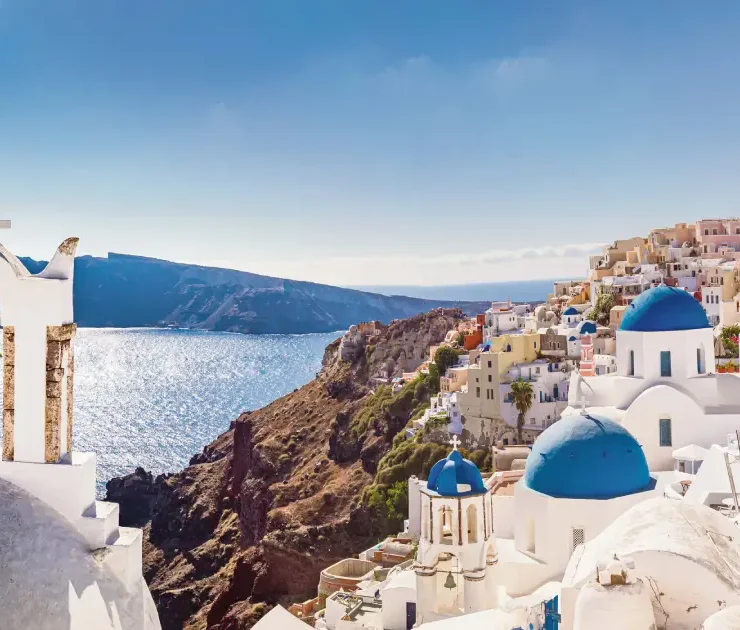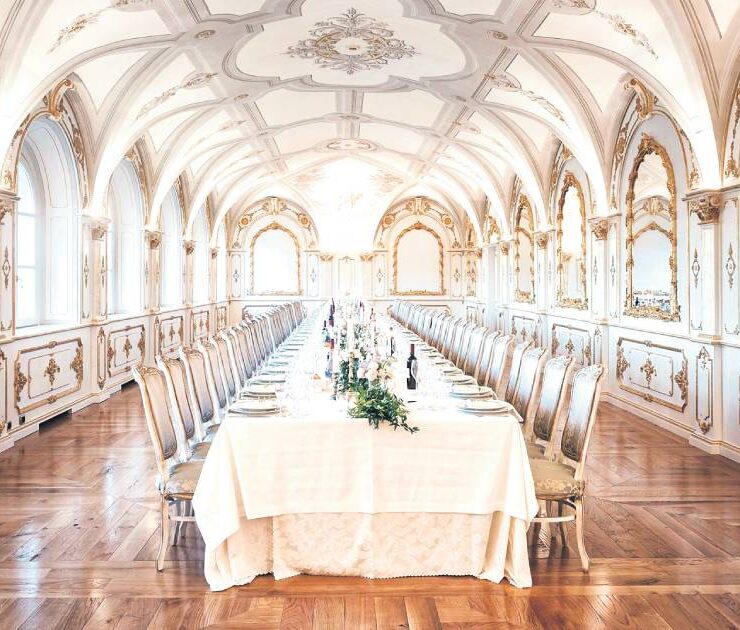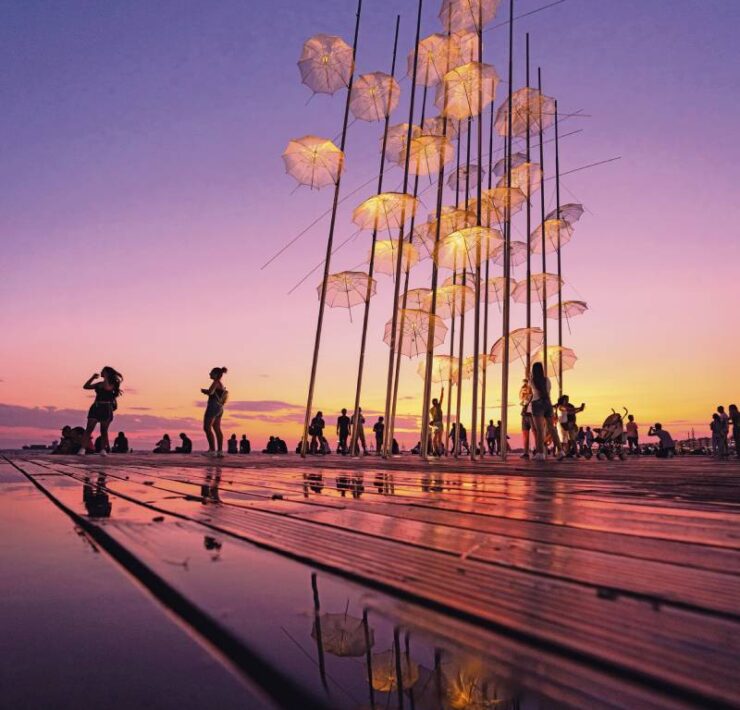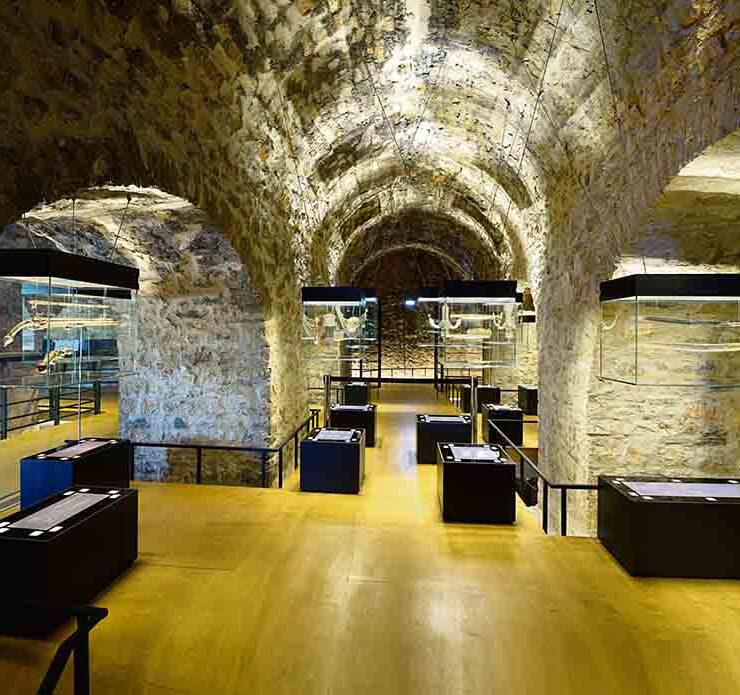Mystras: The Byzantine castle state
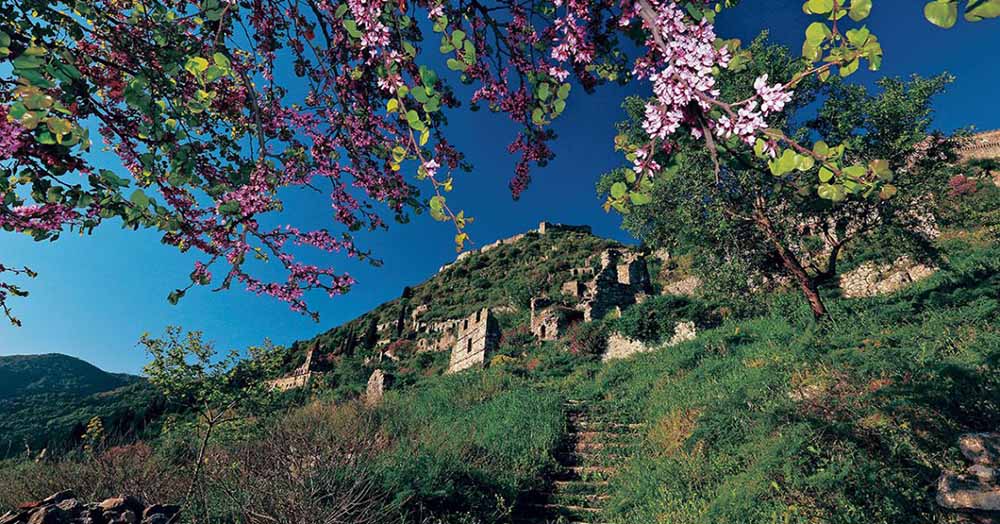
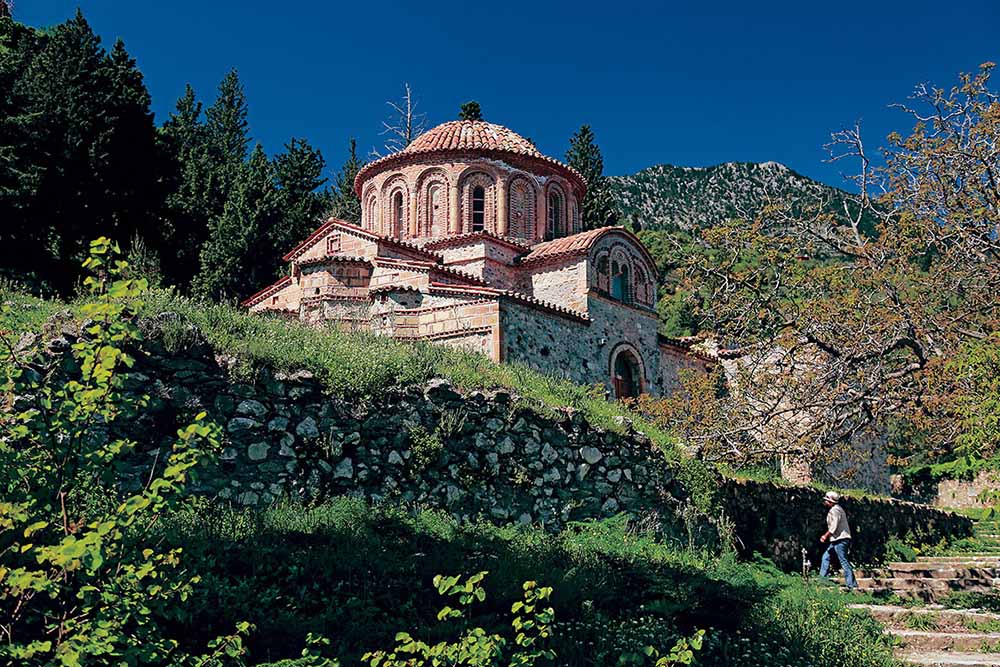
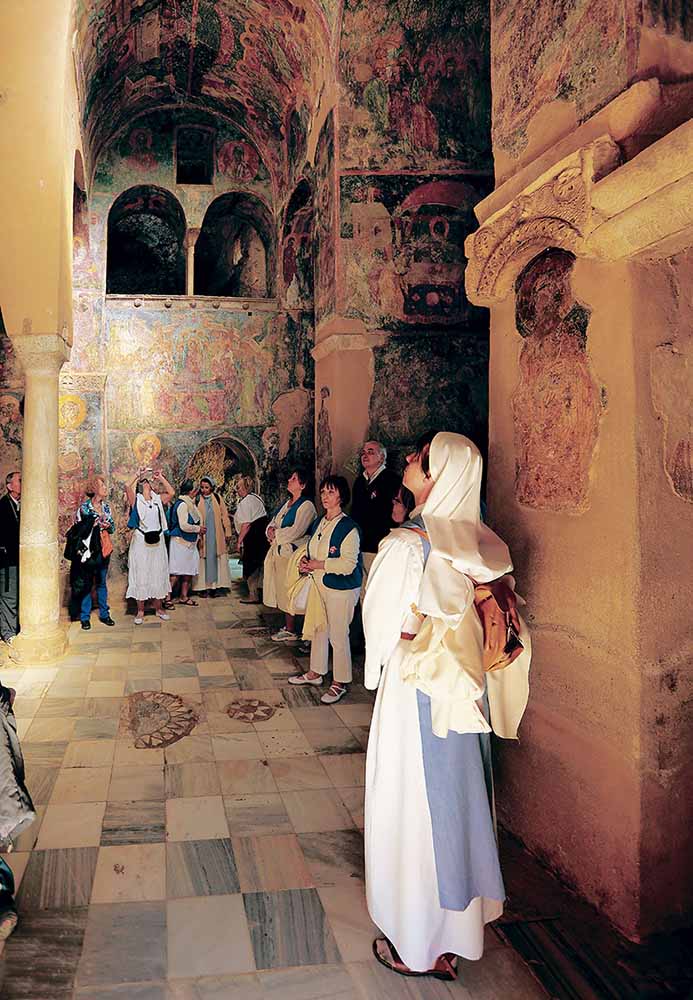
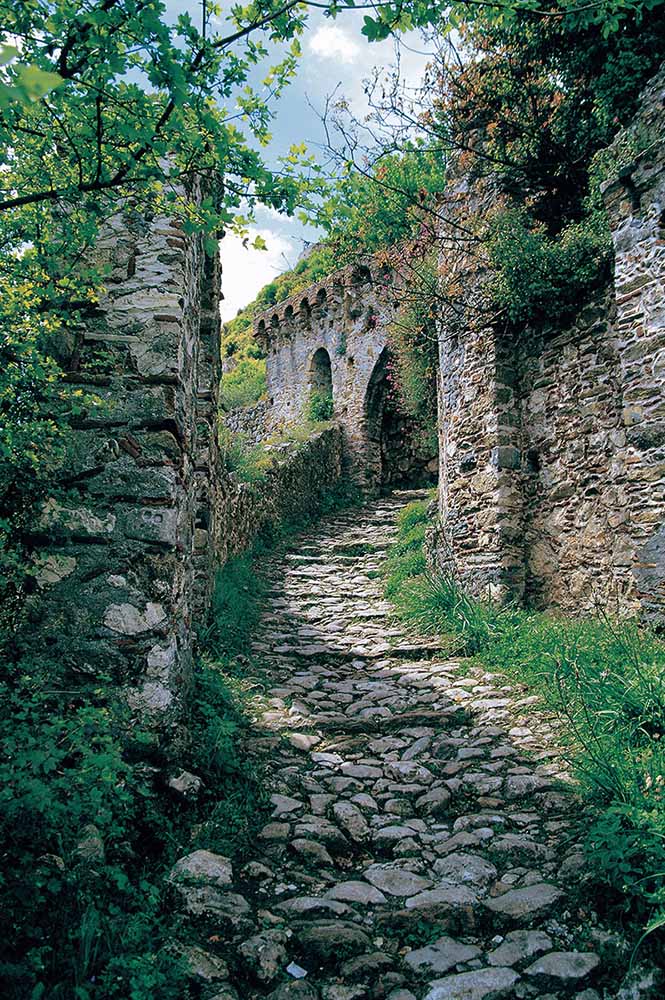
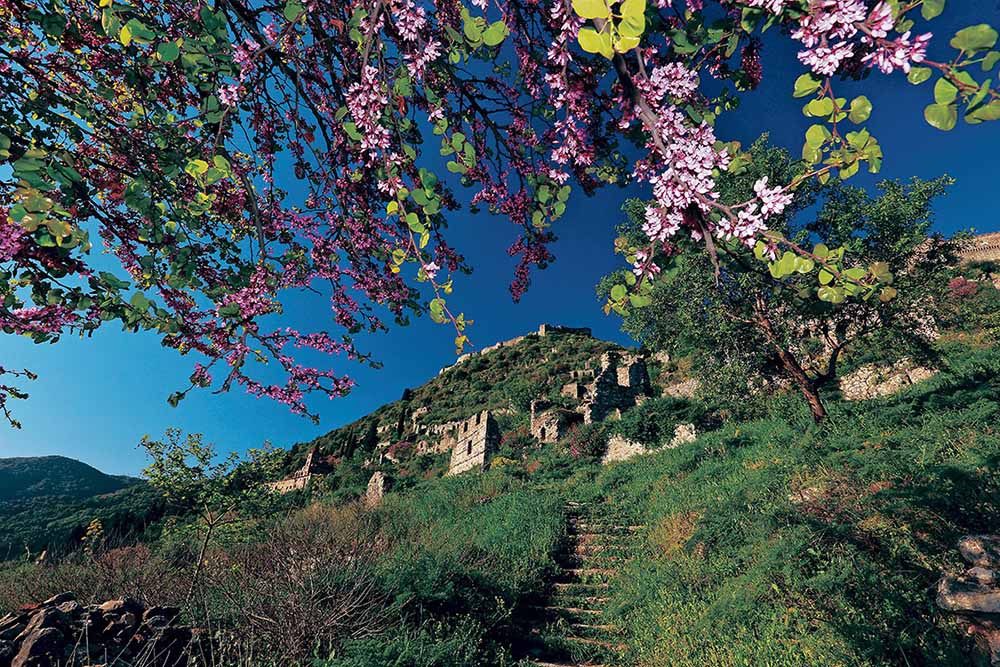 +1
+1 A living legend in the heart of Peloponnese, the capital of the Despotate of the Morea, with its triumphant victories, its humiliating defeats, full of intrigue and conspiracies, used to be “the apple of contention” among Franks, Venetians, Byzantine and Ottomans.
Driving towards Mystras, I pass by the beautiful gardens with the huge magnolias and roses that adorn the courtyards of the last houses of Sparta. As I move further down the road, orange, lemon and olive trees start making their presence felt and make me ponder how fertile this place is. As I arrive at the small town of Mystras, the stone houses, as well as a couple of houses in discord with the architecture of the area, lead me towards the square with the plane trees. Nestled among colorful roses, the imposing statue of Konstantinos Palaiologos, the “Despot” of Mystras and last Byzantine emperors, stands in the background.
The road leading to the byzantine city and the medieval castle is full of bends. However, the Spartan plains on one side, and the castle city of Mystras on the other, make up for an exciting vista.
The history…
The state of Mystras is clearly the most distinctive medieval settlement in Greece. Overlooking the plains, the castle was built in 1249 by William II Villeharduin on the hill of Mystras or Mytzithras. Villeharduin thought that the geographic position was of strategic importance for the Franks. Ten years later, in 1259 A.C. during the Battle of Pelagonia, Michael VII Palaiologos defeated the Franks, capturing Villeharduin. The Byzantine emperor demanded the concession of the castles of Mystras, Monemvasia, Geraki and of Maina. Seeking security, over the years, the inhabitants of the region and of ancient Sparta would settle in Mystras.
Mystras started gaining prominence as a military, administrative, financial and cultural center of the Peloponnese. In 1308, the administration was assumed by regular commanders instead of generals, as it was the case until then. The commanders hailed from certain families, such as the Katakouzinoi and the Paleologoi. Later on, the commander took on the title of “Despot” and Mystras became the capital of the “Despotate of the Moreas”.
The organization of the Despotate owes its dynamic start to Manuel Katakouzinos. In 1384, the Palaiologoi assumed power. From 1443 to 1449 Konstantinos Palaiologos becomes the Despot of Mystras. In 1449 he was crowned emperor of Byzantium, and retained the title until the fall of Constantinople. From 1460 the power was held either by Venetians or by Turks. The downfall of Mystras was marked by the founding of Sparta in 1834, by the former king Othonas. In 1921 the castle city was declared an important byzantine monument and in 1989, Mystras was first included in UNESCO’s list of monuments that are considered part of the world Cultural heritage.
Georgios Gemistos – Plithon the “wise”
The last wise man of Byzantium, Georgios Gemistos – Plithon, lived in Mystras. He was a teacher and a judge, but above all, he was a philosopher and a writer, who believed that the Peloponnese was the cradle of the noblest Greek races, and that the salvation of the empire would begin there. In 1975, the late philosopher and academician Ioannis Theodorakopoulos, founded in Magoula, Sparta, a philosophical school and named it “Plithon” after the philosopher.
A tour of the Upper and Lower town of Mystras
Arriving at the medieval – Byzantine town of Mystras, the guests must choose where to start their tour. There are two entrances to the town, the first is the “Main Gate”, located on the lower part of the town, while the second one is located a few kilometers further, on the upper part, closer to the castle and the palace. My choice was to start at the Main Gate. Following the map to the letter, I went through the arched gate and passed by the deserted house of Laskaris, a characteristic urban byzantine residence that used to belong to one of the most important families of Byzantium.
Continuing to the right, I came across the town’s cathedral, Saint Dimitrios. It is built as a three-nave basilica with a dome, decorated with beautiful religious paintings. Presumably, this is the place where Konstantinos Palaiologos was crowned emperor. Next to the church is housed the Museum of Mystras. Its engraved marble slabs, the beautiful women’s attires and jewelry, as well as the rings of the despots, take the guest back in time. The manuscripts of the Metropolis of Monemvasia and Sparta, are testaments to the spiritual development of the city.
Further on, I passed by the churches of Evangelistria and Saint Theodoroi and went on towards the Perivleptos Monastery. The path among the cobblestone alleys, paved with time worn, grassy stones, is magical.
The amazing frescoes of the monastery, along with the wooden altarpiece are riveting. The icon of Mother Mary was full of offerings. I went down towards the Main Gate, passing by the houses of Krevattas, the church of Agios Christoforos and Ai Giannakis. Taking the car, I drove up to the Upper Gate, where I beheld Saint Sofia, often called the “miniature of Saint Sofia of Constantinople.” Next stop is the Palaces of the Despots of Mystras. The way up the castle of William Villearduin offers a spectacular view.
The Future
Mystras is an important place for nature lovers and hikers, as it is the place where they start walking up the paths of mountain Taygetus. Its soothing, spiritual aura, coupled with the luxury hotels, that focus their services towards wellness and rejuvenation, make Mystras an international destination of tourism.


